Hurricane Hermine, the first to hit Florida in a decade, has killed one person and caused severe damage along the state’s northern Gulf Coast.
As the system pushed into Georgia, it knocked down power lines leaving hundreds of thousands without power.
Gusts of 80mph (130km/h) caused storm surges that flooded part of the coast.
In the town of Cedar Key, waters rose more than 9.5ft (2.9 metres), among the highest surges ever seen, according to the National Weather Service.
After making landfall early on Friday, Hermine swept through Florida and, weakening to a tropical storm, is now making its way towards South Carolina.
A tropical storm warning was issued for parts of New Jersey, Connecticut and New York City, the National Hurricane Center said.
The US Coast Guard also warned boaters and swimmers along the New York and New Jersey coasts to use caution in what is expected to be rough surf and hazardous rip currents this weekend.
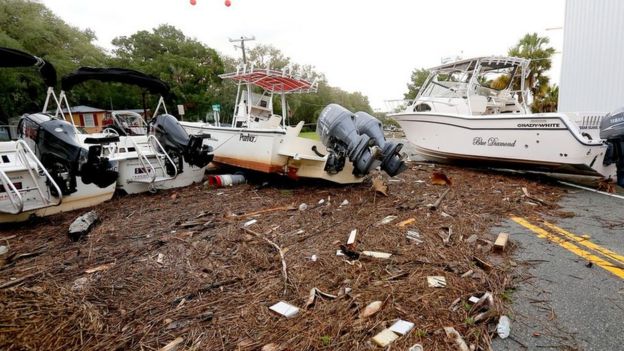
Police in Taylor County, Florida, that has a population of more than 20,000, said the storm had inflicted “severe damage”.
In the state capital Tallahassee, where people were urged to move to higher ground to avoid flash floods, at least 70,000 homes were without power at one point, affecting 60% of people in the region.
Hurricanes in the US
- While Florida is prone to storms and storm surges, it has not seen a hurricane in close to 4,000 days
- The last hurricane to strike Florida was Wilma in October 2005, causing five deaths and an estimated $23bn (£17bn) of damage
- Hurricane Katrina hit Louisiana in the same year, killing nearly 2,000 people and displaced one million
- In fact, Hermine is the first hurricane to make landfall in the US since Arthur in July 2014 – no hurricanes touched down in 2010, 2013 or 2015
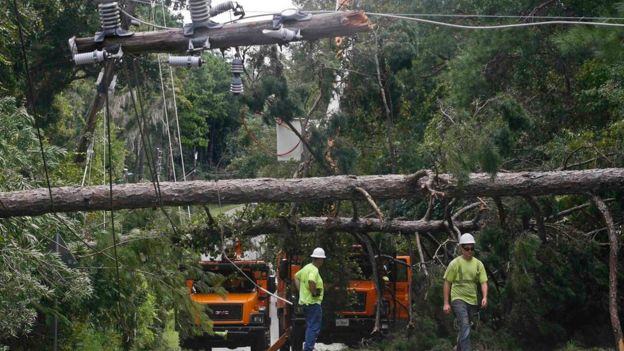
“It is a mess… we have high water in numerous places,” Virgil Sandlin, the police chief in Cedar Key, told the Weather Channel. “I was here in 1985 for Hurricane Elena and I don’t recall anything this bad.”
Governor Rick Scott had earlier declared a state of emergency for 51 counties across the state.
Weather officials predict Hermine could bring heavy rains along the East Coast in the coming days.
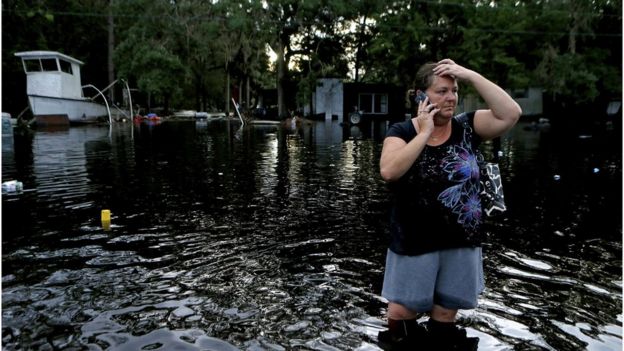
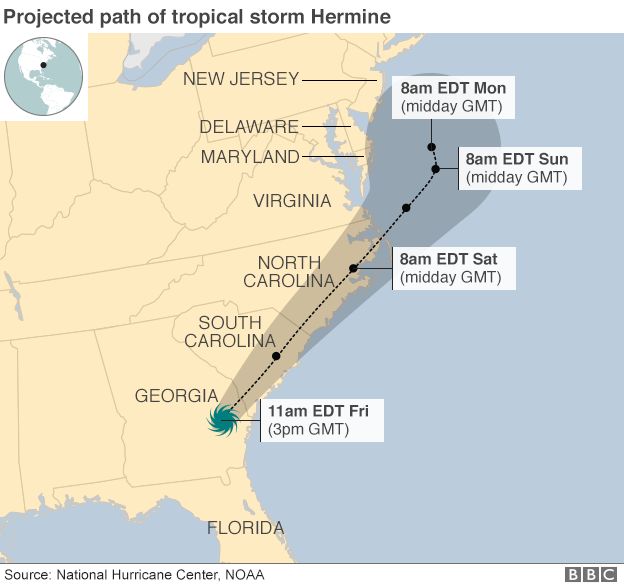
In Georgia, Governor Nathan Deal also declared a state of emergency, for 56 counties, but the state was spared the havoc it had expected.
“We’re having a bit of a sigh of relief,” said Jim Butterworth, director of the Georgia Emergency Management Agency.
But 107,000 customers were reported to be without power across the state as crews worked to repair damage.
Some models show that the storm will stall near the New Jersey coast next week, potentially bringing prolonged heavy rain to the area.
Hurricane scales
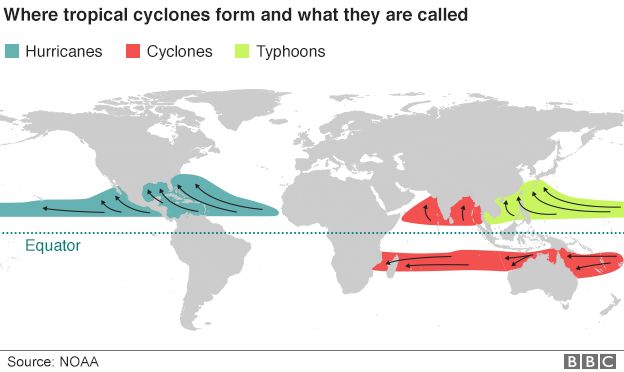
Category one: sustained winds of 74-95mph (119-153 km/h); some damage and power cuts
Category two: winds of 96-110mph (154-177 km/h); extensive damage
Category three: winds of 111-129mph (178-208 km/h); well-built homes suffer major damage
Category four: winds of 130-156mph (209-251 km/h); severe damage to well-built homes, most trees snapped or uprooted
Category five: winds of 157 mph (252 km/h) or higher; high percentage of homes destroyed, area uninhabitable for weeks or months
Source: NOAA










